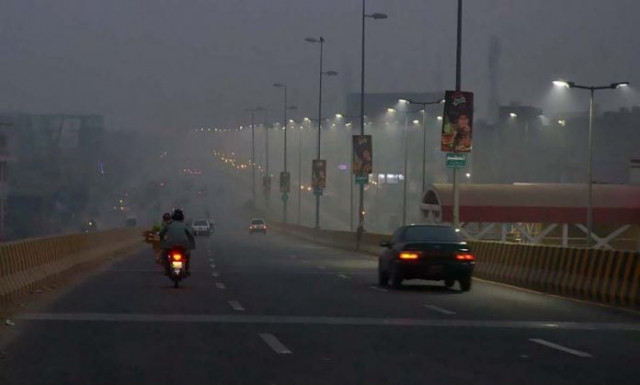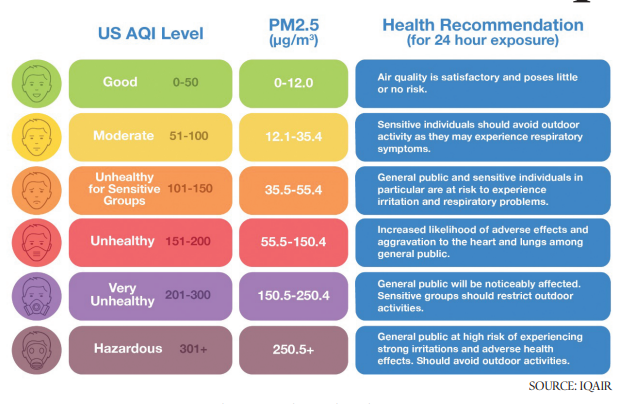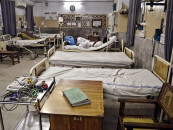Lahore records worst air quality
Smog pushes pollution to very unhealthy level in several areas

As the smog season returns, Lahore once again ranked as the most polluted city in the world with the Air Quality Index (AQI) rating ranging between 166 and 279 in the different areas of the metropolis on Saturday.
The latest data gathered through various government and private monitors highlights that the air quality of the provincial capital is the worst in the world, followed by Beijing, Dhaka, Milan, Shenyang, Seattle, Zagreb, Portland, Karachi and Vancouver. Live statistics released by the United States air quality monitoring agency IQ Air show that the worst atmospheric pollution was recorded at Kot Lakhpat where the AQI rating was hovering around 279. The air quality of the provincial capital was in the range of unhealthy to very unhealthy for humans and animals in different areas.
On average, the PM2.5 concentration in Lahore’s air is currently 16.8 times above the World Health Organisation (WHO) annual air quality guideline value. Air quality statistics released by the Regional Meteorological Centre in Lahore show that the prevailing meteorological conditions indicate that there are chances for the accumulation of suspended aerosols in the atmosphere in the coming two days, which may result in poor visibility. The AQI may also remain in the ‘unhealthy for sensitive group’ range for the Lahore region during the period.
The issue of smog was first highlighted in 2017 when, following a court order, the Punjab Environment Protection Council approved a Smog Action Plan and adopted an AQI classification system. However, even after the passage of five years, the air quality report of the Punjab Environment Protection Department still indicates that it is either monitoring the air quality of the provincial capital with a mobile van or lowcost sensors.

The department has no mechanism of uniform and professional air quality monitoring system since it has failed to procure requisite equipment despite recurring public concerns. Interestingly, a day earlier, the Lahore High Court (LHC) had to intervene again. The court directed the provincial authorities to impose a smog emergency across the province ahead of the winter season. It also ordered the authorities to immediately close the smoke-emitting factories, besides taking action against persons involved in burning crop residue. The bench warned that action on charges of contempt of court would be taken against officers responsible for preventing the burning of crop residue in case of failure to impose the ban.
In just a week, Lahore had become the most polluted city in the world, the court observed while hearing a petition filed by a citizen, seeking directions for the government to take steps for controlling the smog in the province. The court directed the Punjab chief secretary to hold an emergency meeting and take steps for imposing the smog emergency in the province. It also ordered purchase of air quality testing equipment within two weeks, on which the Planning and development Department has committed to releasing funds for the purchase of the equipment within a week.
What is PM2.5?
PM2.5 refers to atmospheric particulate matter (PM) that has a diameter of less than 2.5 micrometres, which is about 3% the diameter of a human hair. Commonly written as PM2.5, particles in this category are so small that they can only be detected with an electron microscope. Since they are so small and light, fine particles, they tend to stay longer in the air than heavier particles. This increases the chances of humans and animals inhaling them into their bodies.
Owing to their minute size, particles smaller than 2.5 micrometres are able to bypass the nose and throat and penetrate deep into the lungs and some may even enter the circulatory system. Several studies have found a close link between exposure to fine particles and premature death from heart and lung diseases. Fine particles are also known to trigger or worsen chronic diseases such as asthma, heart attack, bronchitis and other respiratory problems.



















COMMENTS
Comments are moderated and generally will be posted if they are on-topic and not abusive.
For more information, please see our Comments FAQ